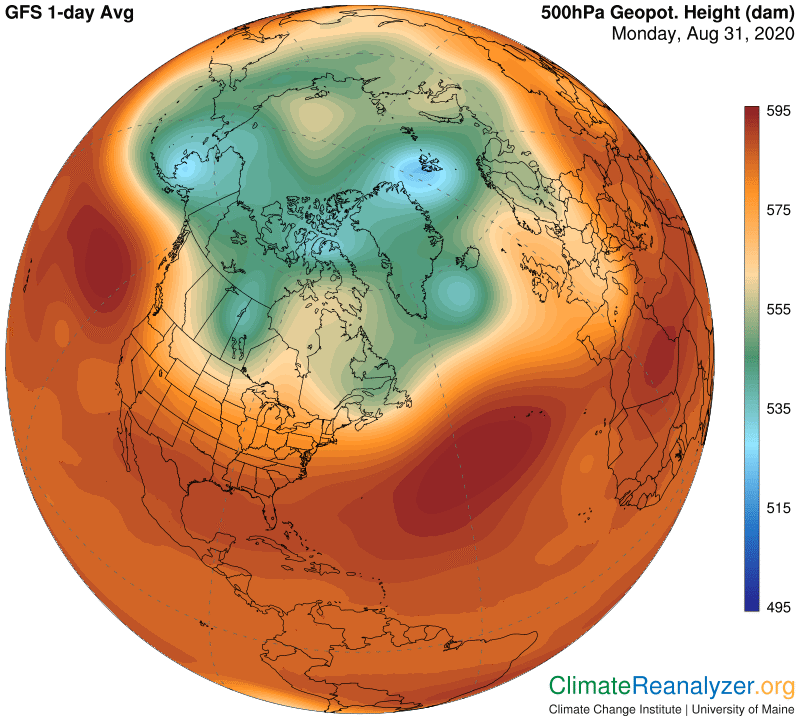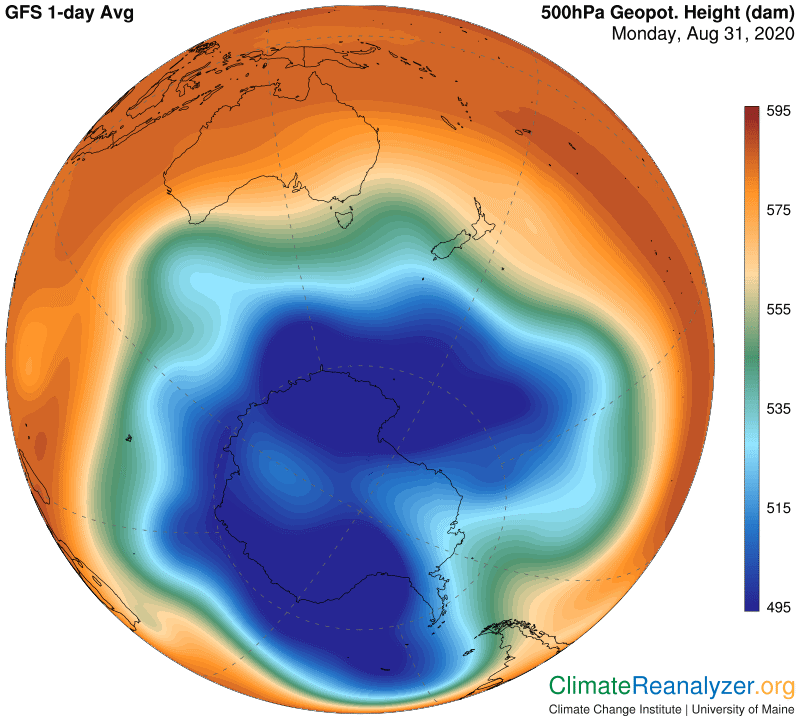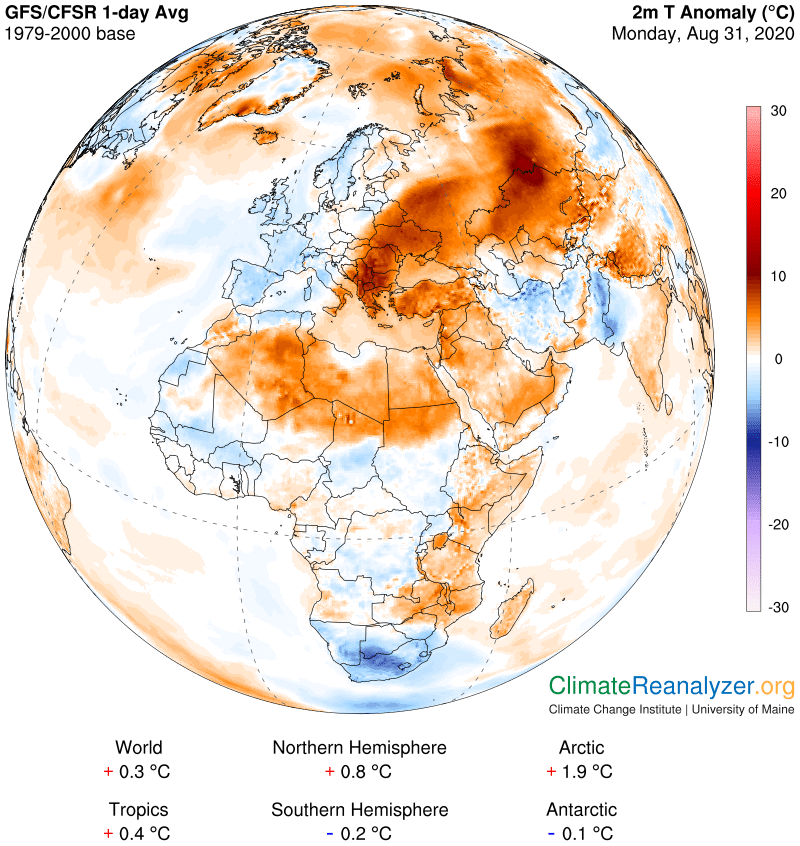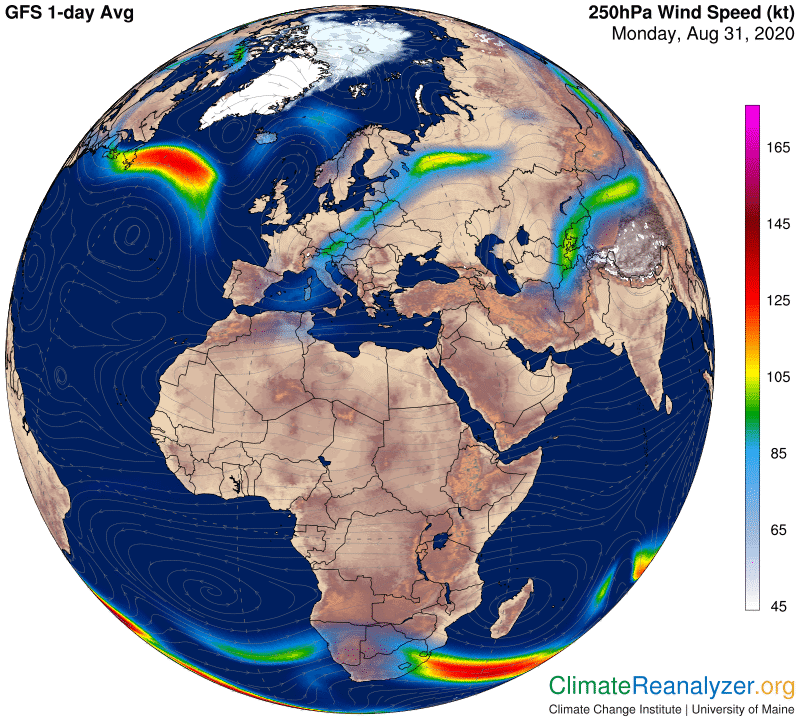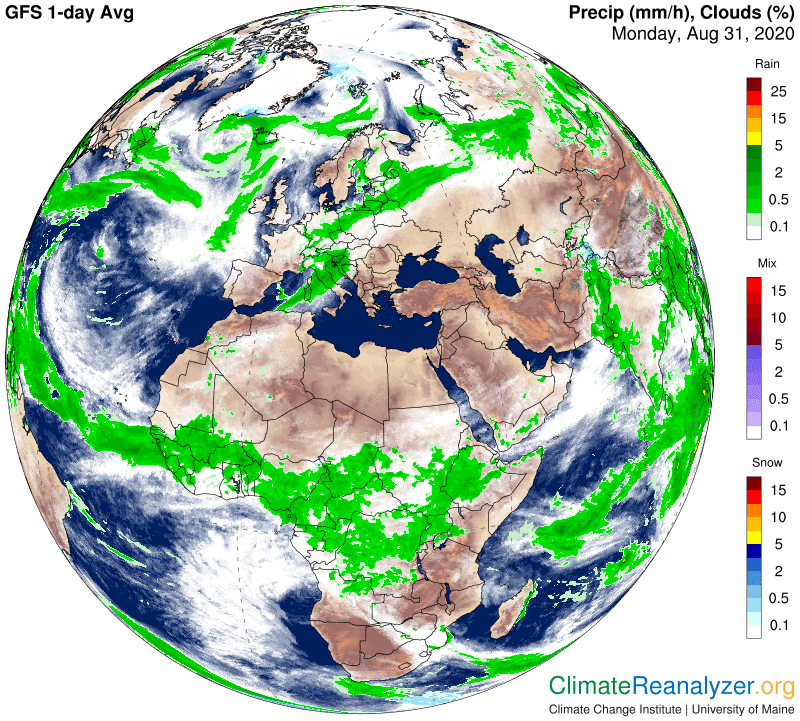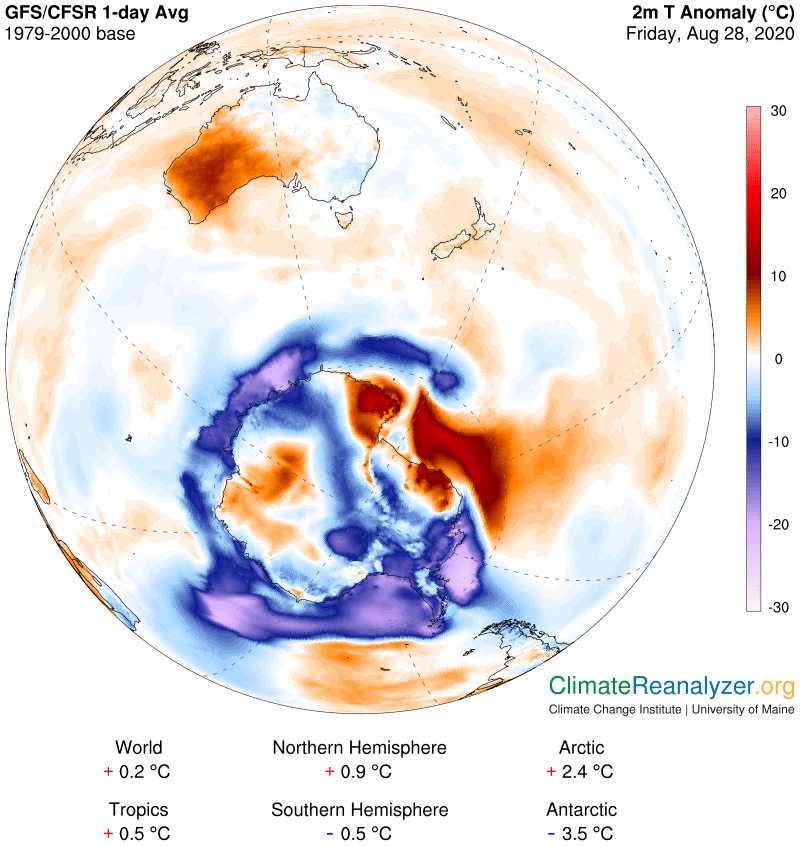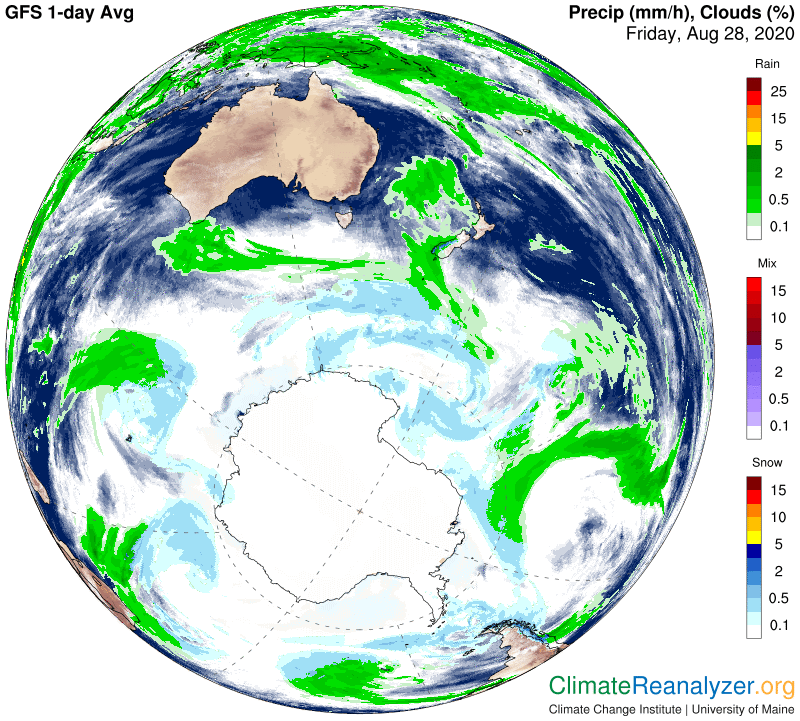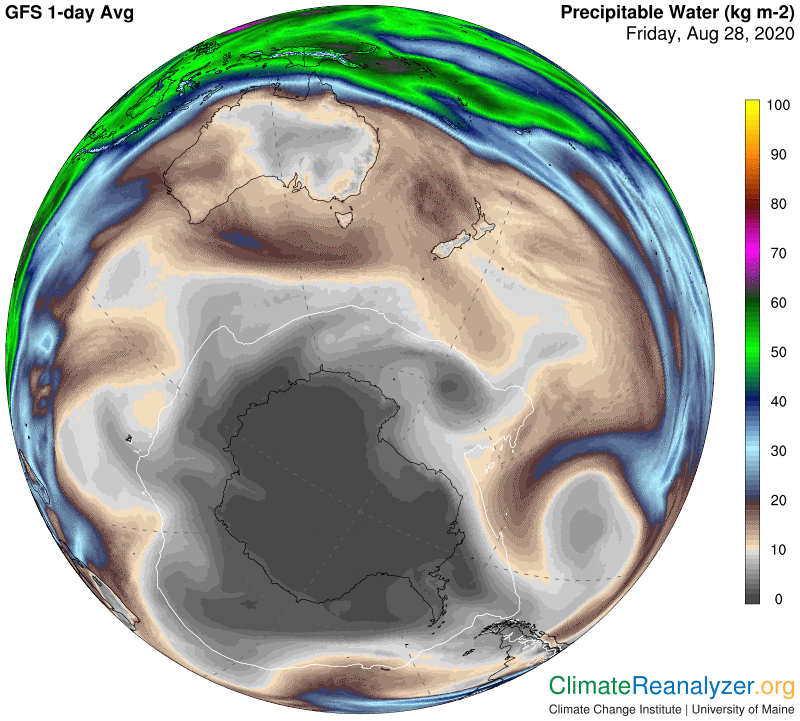We need to take a closer look at the North American cold anomaly today. It’s hard for me to remember seeing anything comparable in overall size and extreme degree of abnormal cold on these maps outside of Antarctica. The patch in the center reading minus-20C especially requires an explanation. I’ve heard that temperatures fell as much as 60F over a brief period of time in some places, so the map must be true, but how is this possible? Where could so much “refrigeration” be coming from? Can we find any clues? Here is the map:

We learned yesterday that an unusual formation of jetstream winds was involved, so an update of that map is appropriate. The two strong “legs” of jet winds are still there, intersecting in an area where their common pathway has made a sharp bend as it changed direction from south to north. The legs were generally squeezed quite closely together over a fairly long stretch of bending area, where we also see reduced windspeed:

It turns out that this entire region of pathway bending and slower winds did not simply repel the content of the two incoming streams of water vapor but managed to absorb and compress a considerable amount of it, causing condensation. This natural development resulted in cloud formation and rainfall over much of that region, as we’ll see in the next map. The same result can be seen along the lower edge of the northward moving jet after it had picked up speed.

Heavy clouds and rainfall are often responsible for a sharp drop in temperature, but not as low as the big drop occurring in the central part of this anomaly. Something of a more extreme nature must be involved, and there is only one place to look for it—the Precipitable Water map. Here we will find a broad area where total vapor concentrations are recorded below 10kg, which is truly exceptional for the day, and even down to around half of that in places:

One thing we don’t know for sure, unfortunately, is what the exact figures for “normal” PWat readings would be over all the various parts of the area at this time of year, but I am confident they would be a good bit higher, possibly to as much as 25 kg or so in the non-desert parts. That kind of information could be gathered fairly easily into a daily global map based on existing data taken from average daily readings over a recent historical period, and maybe some day it will happen. Generally speaking, if a certain area has a PWat reading for any one day that is only 25% of its normal reading, and nothing else has changed, then its temperature for that day should react by dropping to as much as 20C below normal. Such an extreme situation will not often happen outside of a polar region, where PWat readings are often found below 1kg and are easily leveraged, but it may very well have actually occurred yesterday right here in the US.
Carl






















